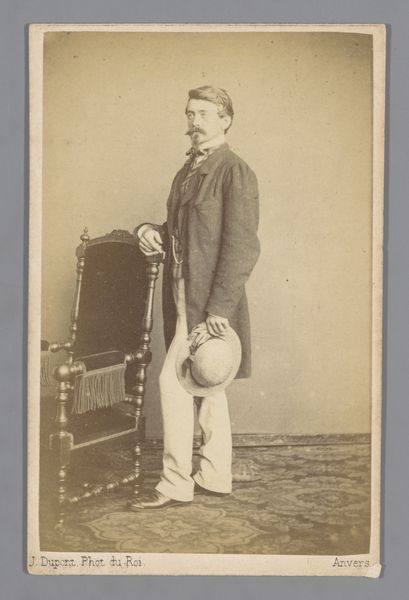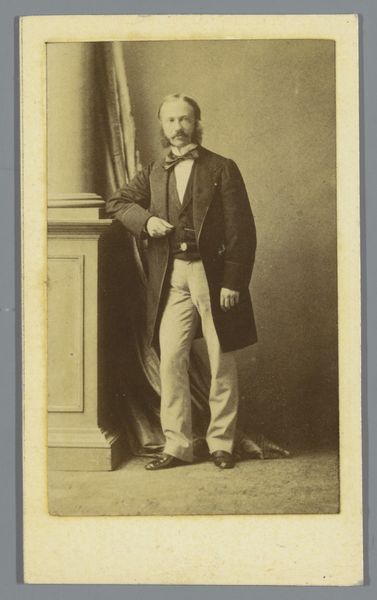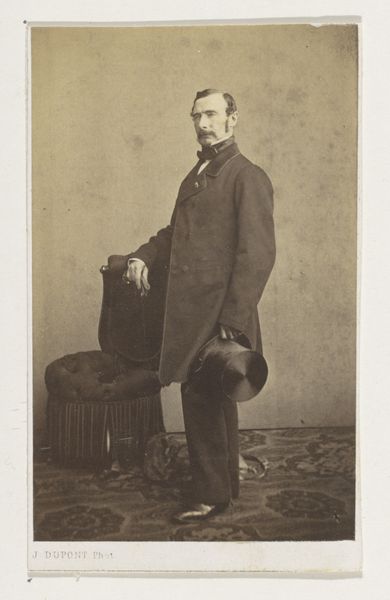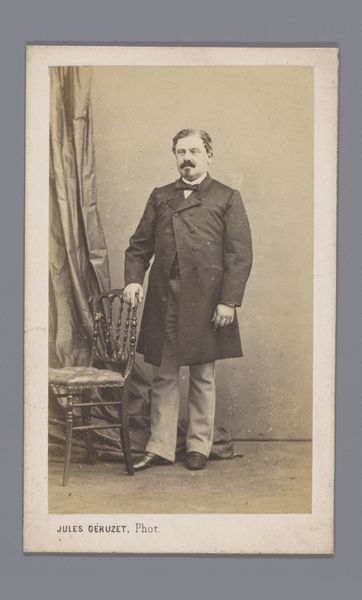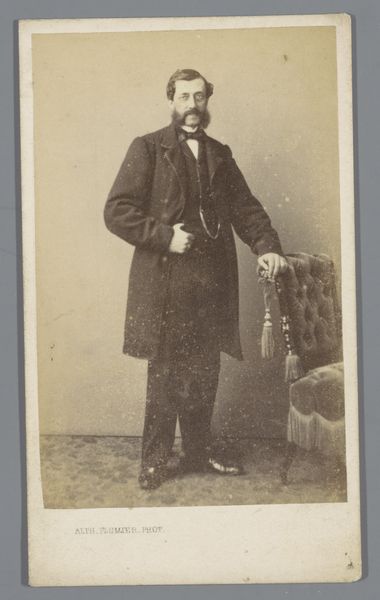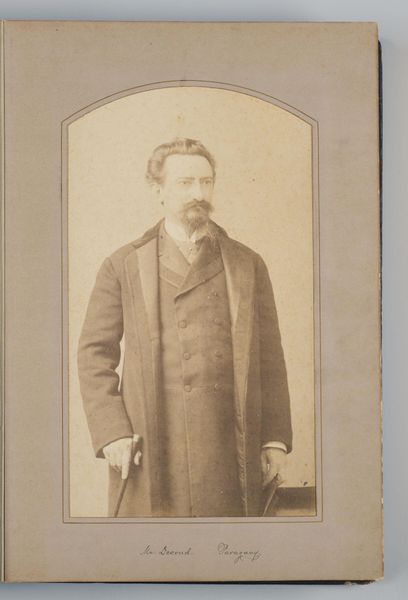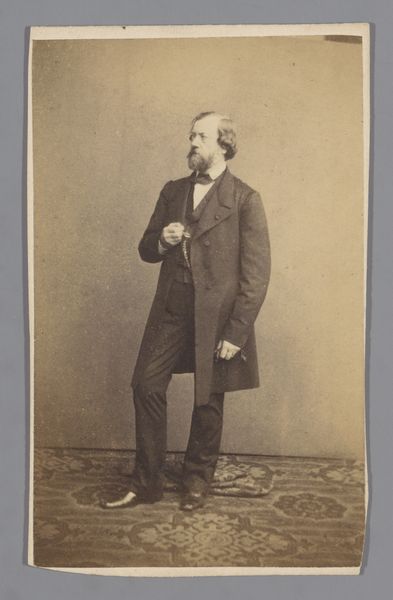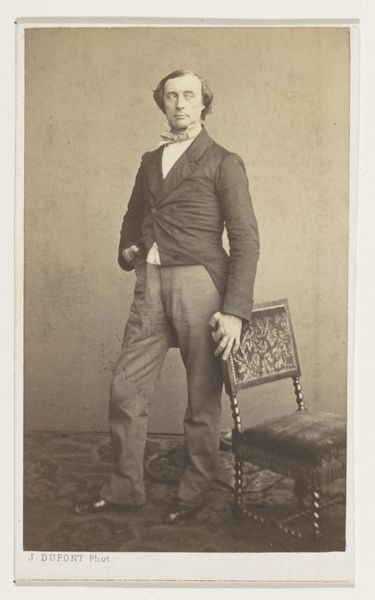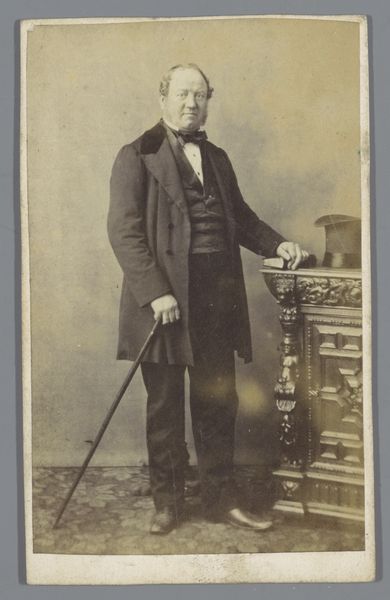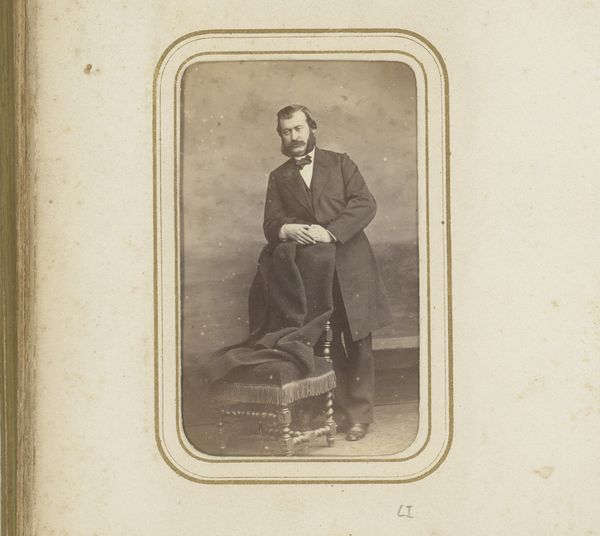
photography, gelatin-silver-print
#
portrait
#
photography
#
gelatin-silver-print
#
realism
Dimensions: height 105 mm, width 63 mm
Copyright: Rijks Museum: Open Domain
Curator: This is "Portret van een onbekende man bij een tafel," or "Portrait of an Unknown Man at a Table," taken between 1865 and 1873 by photographer E. Cornelisse. It’s a gelatin silver print, showcasing the realism that was becoming increasingly popular during that period. Editor: He looks a little severe, doesn’t he? Stern, almost. But his posture suggests a kind of easy confidence, which is somewhat contradicted by the slightly awkward placement of his hand in his pocket. It’s intriguing. Curator: Well, photography at this time was a very self-conscious act. Posing was crucial, as it was still quite novel to be captured in such detail. This image provides insights into the performance of masculinity and class in the latter half of the 19th century. Editor: True. It's interesting how he's positioned himself next to that table draped with fabric – it feels staged, like a theatrical backdrop. It adds a layer of artifice, doesn’t it? And the presence of a walking stick suggests status, but also perhaps fragility. Who was he trying to project? Curator: Precisely. These studio portraits served a particular function within society. It provided a democratization of portraiture. Prior to photography, only the elite could afford a painted portrait, a symbolic form of power. Suddenly, a likeness could be attained by those who could afford a photograph. Editor: And who then gets to write the narratives around who is included and excluded in such imagery? Who commissions it, and what's being performed, especially around things like respectability? It makes me question the layers of privilege present, and which might be obscured. Curator: That’s an important perspective to consider, the inherent bias in the subject matter itself, shaped by class and cultural norms. The proliferation of photography and how its distribution played a part. Editor: So this portrait, while appearing to present a specific individual, reflects broader cultural narratives about status, masculinity, and the very act of representation itself in the 19th century. The unknown man, now representative of larger social scripts being written. Curator: Exactly. And the photograph offers us a window into these narratives and social structures. The layers of information help inform today's reading. Editor: Indeed. Each time we look at an artifact, there’s something new to unearth when recontextualized within a modern lens. It’s the power of historical conversation.
Comments
No comments
Be the first to comment and join the conversation on the ultimate creative platform.

